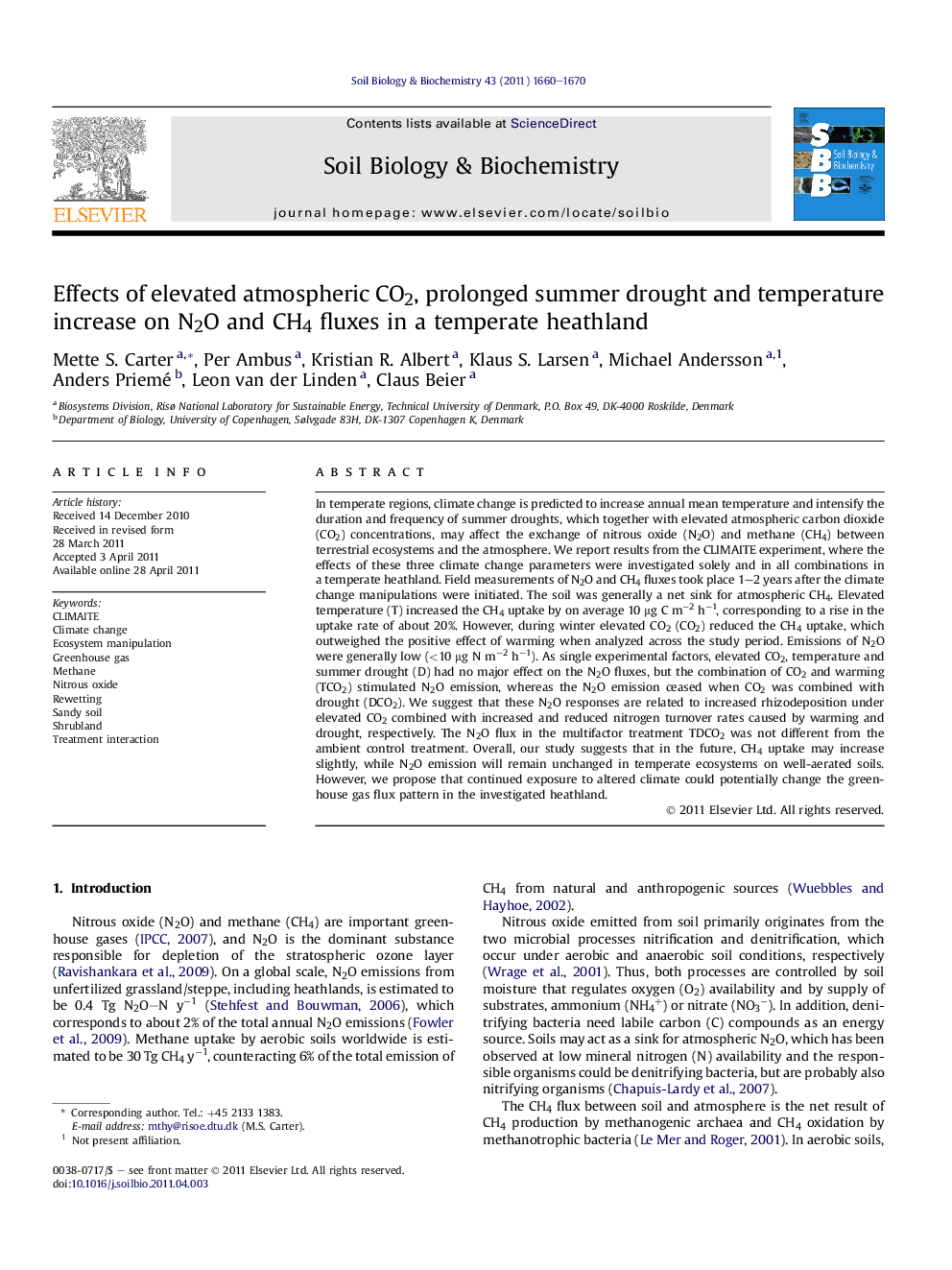| کد مقاله | کد نشریه | سال انتشار | مقاله انگلیسی | نسخه تمام متن |
|---|---|---|---|---|
| 2025104 | 1069981 | 2011 | 11 صفحه PDF | دانلود رایگان |

In temperate regions, climate change is predicted to increase annual mean temperature and intensify the duration and frequency of summer droughts, which together with elevated atmospheric carbon dioxide (CO2) concentrations, may affect the exchange of nitrous oxide (N2O) and methane (CH4) between terrestrial ecosystems and the atmosphere. We report results from the CLIMAITE experiment, where the effects of these three climate change parameters were investigated solely and in all combinations in a temperate heathland. Field measurements of N2O and CH4 fluxes took place 1–2 years after the climate change manipulations were initiated. The soil was generally a net sink for atmospheric CH4. Elevated temperature (T) increased the CH4 uptake by on average 10 μg C m−2 h−1, corresponding to a rise in the uptake rate of about 20%. However, during winter elevated CO2 (CO2) reduced the CH4 uptake, which outweighed the positive effect of warming when analyzed across the study period. Emissions of N2O were generally low (<10 μg N m−2 h−1). As single experimental factors, elevated CO2, temperature and summer drought (D) had no major effect on the N2O fluxes, but the combination of CO2 and warming (TCO2) stimulated N2O emission, whereas the N2O emission ceased when CO2 was combined with drought (DCO2). We suggest that these N2O responses are related to increased rhizodeposition under elevated CO2 combined with increased and reduced nitrogen turnover rates caused by warming and drought, respectively. The N2O flux in the multifactor treatment TDCO2 was not different from the ambient control treatment. Overall, our study suggests that in the future, CH4 uptake may increase slightly, while N2O emission will remain unchanged in temperate ecosystems on well-aerated soils. However, we propose that continued exposure to altered climate could potentially change the greenhouse gas flux pattern in the investigated heathland.
► In future, the CH4 uptake may increase in temperate ecosystems on well-aerated soils.
► Temperature rise is the climate change parameter that will stimulate the CH4 uptake.
► N2O emissions may not change in N poor ecosystems on aerobic soils in future.
► Effects of climate change parameters must be evaluated in multifactorial experiments.
Journal: Soil Biology and Biochemistry - Volume 43, Issue 8, August 2011, Pages 1660–1670